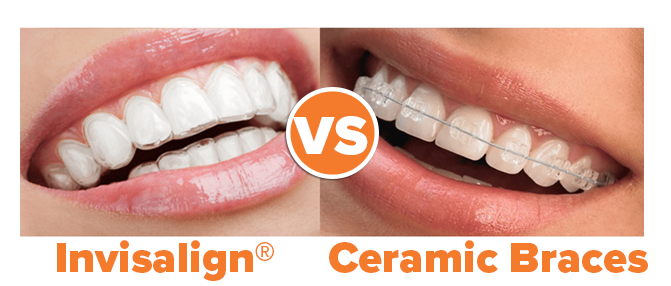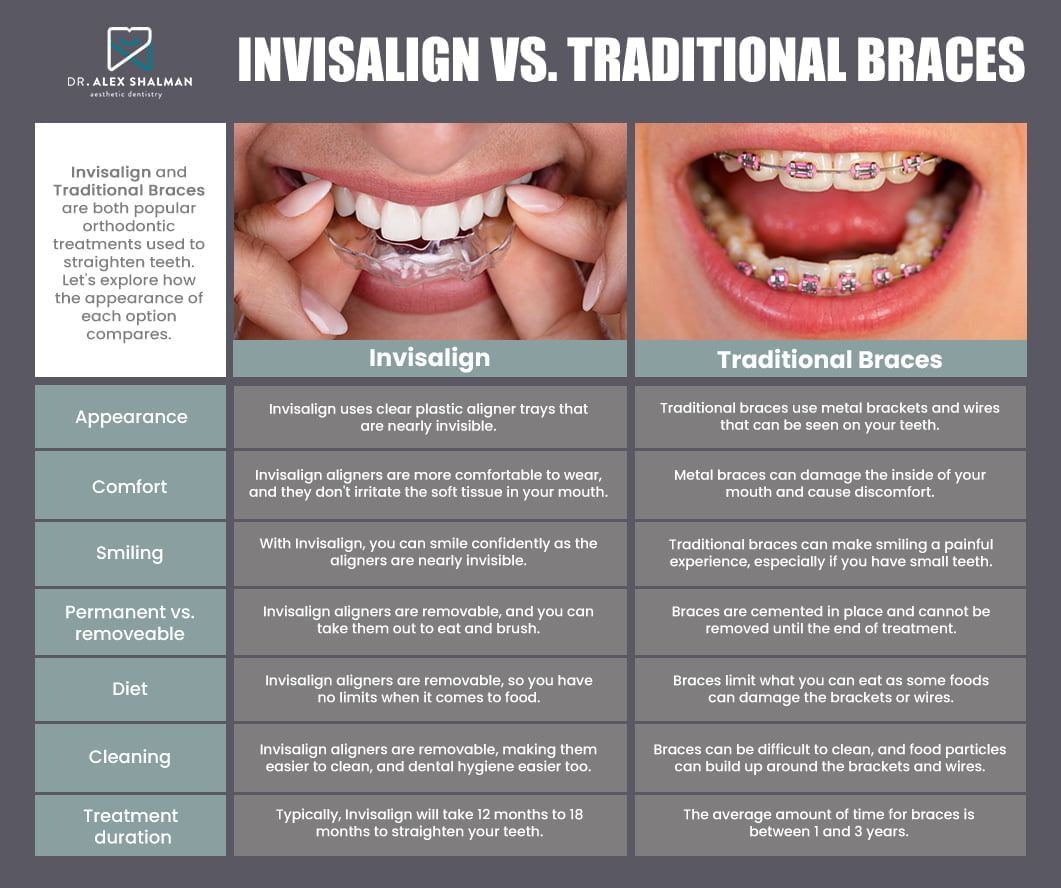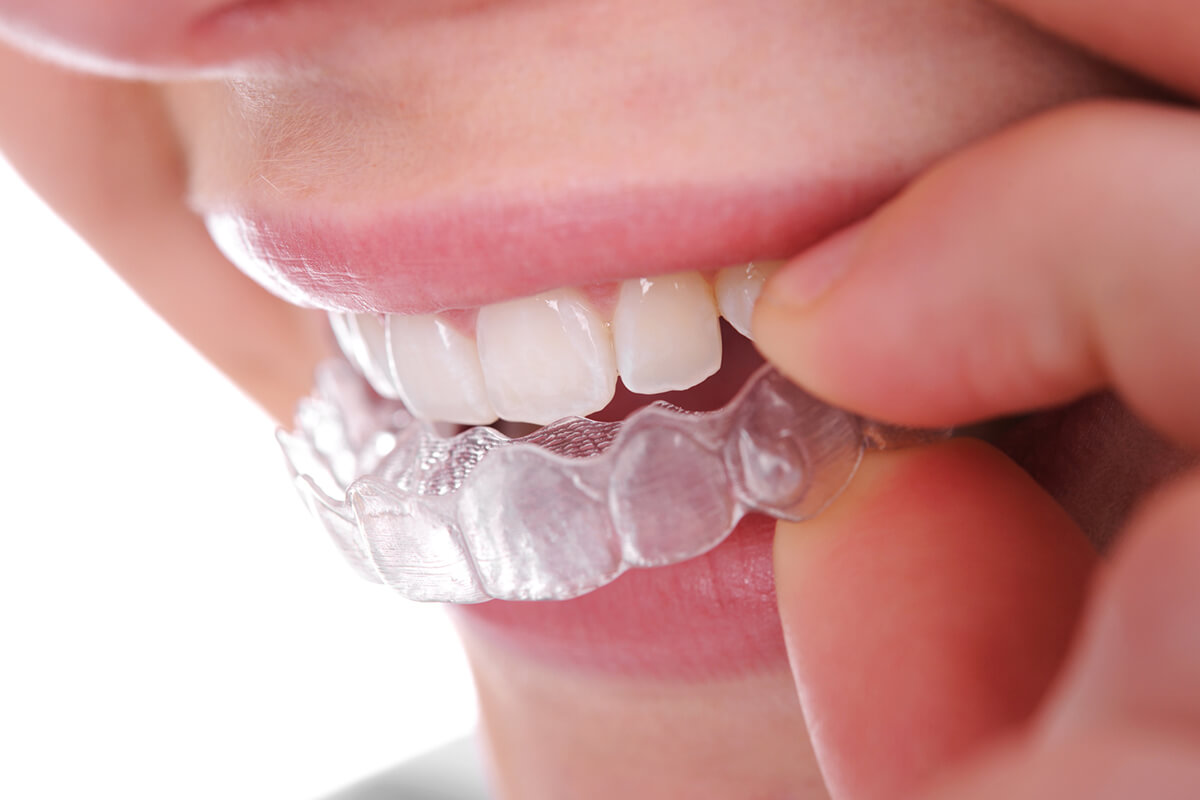The Ultimate Contrast: Invisalign vs. Traditional Braces for Adults
The Ultimate Contrast: Invisalign vs. Traditional Braces for Adults
Blog Article
Invisalign vs. Conventional Braces: Which Choice Is Right for You?
When thinking about orthodontic treatment, the option in between Invisalign and typical braces offers a number of essential factors that warrant cautious examination. Invisalign uses a very discreet choice with detachable aligners, while traditional dental braces supply a more visible yet reliable service for serious imbalance. Each option encompasses distinctive benefits and disadvantages connected to aesthetic appeals, comfort, therapy period, and cost. Understanding these subtleties is essential for making an informed choice that aligns with your personal choices and way of life. The inquiry stays: which option will ideal meet your orthodontic demands and expectations?
Review of Treatment Choices

On the other hand, standard dental braces contain metal braces and cables that are adhered to the teeth. This approach uses constant pressure with time to accomplish placement. While efficient for intricate orthodontic issues, conventional dental braces call for routine visits for changes and can posture obstacles in maintaining oral hygiene due to the difficulty of cleaning around cables and braces.
Both choices have their benefits, and the selection typically rests on specific dental problems, lifestyle preferences, and person compliance. Ultimately, consulting an orthodontic specialist is essential for identifying one of the most appropriate treatment strategy customized to individual needs. Recognizing the subtleties of each alternative can dramatically influence the total success of orthodontic treatment.
Aesthetic Factors To Consider
A considerable element affecting the selection between Invisalign and traditional dental braces is the visual appeal each therapy uses. Invisalign aligners are crafted from clear plastic, making them basically undetectable when used.
In contrast, conventional braces include metal brackets and wires, which can be a lot more obvious. While innovations in orthodontic modern technology have led to the advancement of smaller brackets and colored elastics, typical braces still maintain an even more obvious profile. For some people, the visibility of dental braces may discourage them from seeking necessary treatment.
Eventually, the selection between Invisalign and standard dental braces might hinge on individual choices pertaining to looks. People who focus on discretion often lean toward Invisalign, while those that are less concerned concerning presence may select traditional braces. Recognizing the aesthetic effects of each choice is vital for making an educated decision that lines up with one's lifestyle and choices.
Comfort and Convenience

In regards to comfort, Invisalign aligners are detachable, allowing patients to enjoy their favored foods without limitation and keep ideal oral health. Cleaning and flossing are streamlined, as the aligners can be obtained throughout these routines, whereas traditional dental braces call for mindful steering around cables and braces.
In comparison, conventional braces require normal changes, making them much less practical for those with busy routines. Generally, the comfort and benefit of Invisalign make it an appealing selection for lots of people looking for orthodontic therapy.
Treatment Period and Efficiency
While both Invisalign and standard dental braces are efficient in correcting dental misalignments, the period of therapy can vary significantly between both options. Typically, Invisalign treatment can take anywhere from 12 to 18 months, depending on the intricacy of the case. The click reference clear aligners function by slowly moving teeth into their wanted positions, and routine follow-ups with an orthodontist assistance make sure development stays on course.
In contrast, traditional dental braces typically require a longer dedication, typically varying from 18 months to 3 years. This is because of their set nature and using wires and braces, which can be much more effective for intricate cases and extreme misalignments (Invisalign). The treatment efficiency of typical dental braces is well-documented, as they enable specific changes and better control over tooth movement
Eventually, the selection between Invisalign and typical braces may depend upon both the anticipated therapy duration and the certain oral issues handy. Consulting with an orthodontist is vital, as they can offer tailored referrals based upon private demands, making certain the picked technique straightens with desired timeframes and results.
Cost Contrast and Insurance Policy Choices
Expense plays a considerable function in the decision-making procedure for individuals considering orthodontic therapy, whether deciding for Invisalign or traditional braces. Usually, the price of Invisalign arrays from $3,000 to $8,000, while standard dental braces normally set you back in Bonuses between $2,000 and $6,000. Factors influencing these costs consist of the intricacy of the situation, the period of therapy, and geographical area.
Numerous oral insurance coverage plans supply partial coverage for orthodontic treatments, however the specifics can differ extensively. Usually, typical braces might be extra often covered by insurance strategies compared to Invisalign, which some insurance companies classify as a cosmetic procedure.
In addition, a number of orthodontic methods use versatile payment plans, making both treatment options a lot more accessible. People need to inquire regarding possible funding alternatives and discounts for in advance settlements. Assessing the overall expense, consisting of insurance benefits and layaway plan, is necessary for making a notified decision that aligns with both visual preferences and budget plan considerations.

Conclusion
In recap, the option between Invisalign and typical braces depends upon several elements, including aesthetic choices, convenience, therapy duration, and expense. Invisalign uses a very discreet, removable choice that promotes oral hygiene and dietary adaptability, while standard dental braces may be much more ideal for complicated dental problems and often come with a lower rate factor. Inevitably, assessment with an orthodontist is necessary to evaluate individual situations and identify one of the most proper therapy alternative for achieving optimal dental positioning.
When taking into consideration orthodontic therapy, the option in between Invisalign and typical dental braces offers several essential elements that warrant mindful assessment.Comparing Invisalign and conventional dental braces discloses distinctive treatment alternatives for orthodontic modification.While both Invisalign and traditional braces are efficient in correcting dental imbalances, the period of therapy can vary substantially in between the 2 choices.Cost plays a significant role in the decision-making procedure for individuals considering orthodontic treatment, whether choosing for Invisalign or traditional dental braces.In summary, the selection in between Invisalign and standard dental braces pivots on multiple aspects, including visual choices, comfort, treatment duration, and price.
Report this page